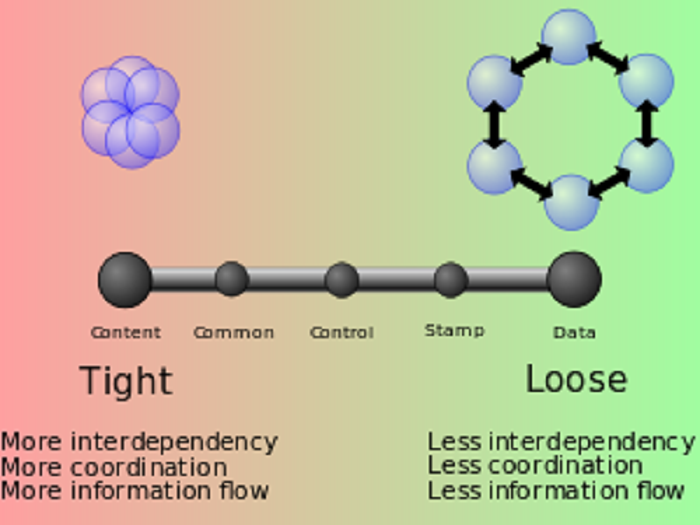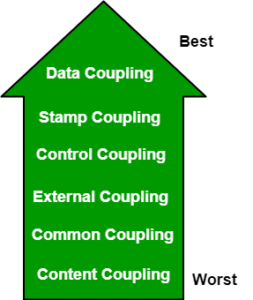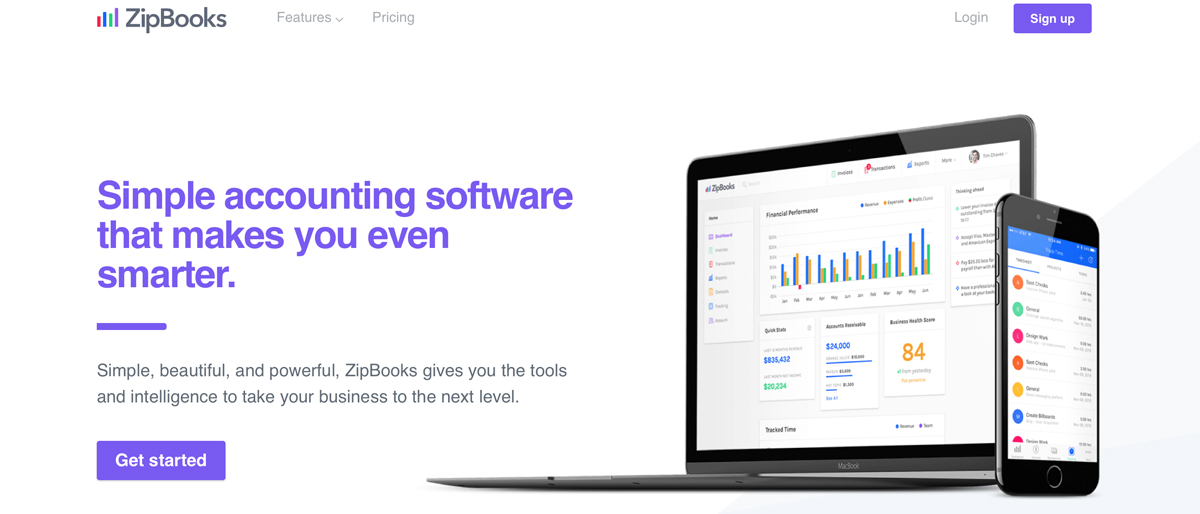Coupling is a part of the Software Requirement Specification (SRS) documentation and is defined as the degree of independence between software modules. It defines the level of interdependency among the modules. Two modules that are loosely coupled do not depend on each other, whereas two modules that are tightly coupled do. This means the quality of the software depends on the coupling value. Higher the coupling value, lower the quality of the software.
With over 3 million IT job opportunities by 2025, now is the right time for you to pursue a career in software engineering. To have a better grasp of software engineering, its tools, techniques, and skills, check out these software development online courses.
The level of coupling is determined by the amount of data transfer that takes place between the two modules. If one of the modules strongly depends on the data that the other module provides to it, then they are tightly coupled. Similarly, if the dependency is low, they are loosely coupled.
Types of Coupling
1. Common Coupling
Common coupling comprises the modules that share the data of the software system. This also indicates any changes made in the common data since all the modules share the same coupling scenario. Common coupling is generally avoided because it needs more maintenance and you do not have much control over the modules. A great example of this type of coupling is the login page. The login module and backend module depend on each other.
2. Content Coupling
Also known as pathological coupling, content coupling is when two modules share the contents, but when you make changes in one module, you need to update the other one too. When two modules share the same data, the primary key columns for their databases should be related. If this is not the case, then the modules will reflect non-sync data due to the dependency.
3. Data Coupling
If the two modules in a software system have only one interaction and that interaction is in the form of data, then this type of coupling is known as data coupling. Other than that one interaction, the two modules have nothing in common like the functionality or other system components. This coupling does not affect any function or behavior of the software.
4. Control Coupling
Control coupling is when the data of one module controls the activities of the other one. This type of coupling can either have a positive impact on the software application or a negative one. The impact is considered positive when the functionality can be reused. Control coupling is mostly observed in codes.
5. Stamp Coupling
If the two modules share a collection of a structured detailed set of data, then this type of coupling is called the stamp coupling. The elements or the data are already well-placed and organized, so there is no unused data or junk between the two modules. This improves the efficiency and overall performance of the software system.
6. External Coupling
External coupling is when the two modules have some common external influencing factors and are interrelated. These factors can be a hardware requirements needed by both the modules, a common file being used by both the modules, an external application sending the same content or data to both the modules, etc.
Advantages of Coupling
In software engineering, coupling is one of the most important parts of the design phase.
Coupling offers the following advantages:
- Identifies the dependency of each module.
- Increases the performance and quality of the software application.
- Supports the reusability of the functionality among the modules.
- Provides better methods for the maintenance of the system.
To learn more about coupling in software engineering, its types, and their advantages, you can join the IIT Madras online certification course.
In software engineering, coupling plays an essential role as it identifies and limits the connection among several modules in the software. It also helps in improving the quality of the software system and keeps all the elements in check.
FAQs
- Q1: How are cohesion and coupling different?
Ans: Cohesion is the relationship within a module, whereas coupling represents the relationship between the modules.
- Q2: How does coupling affect the quality of software?
Ans: A good software will have loose coupling. Lower the value of coupling, better the performance of the software will be.
- Q3: Why is coupling helpful in OOP?
Ans: In OOP, coupling allows your code to be flexible, adaptive to changes, and easier to work with.









Add Comment